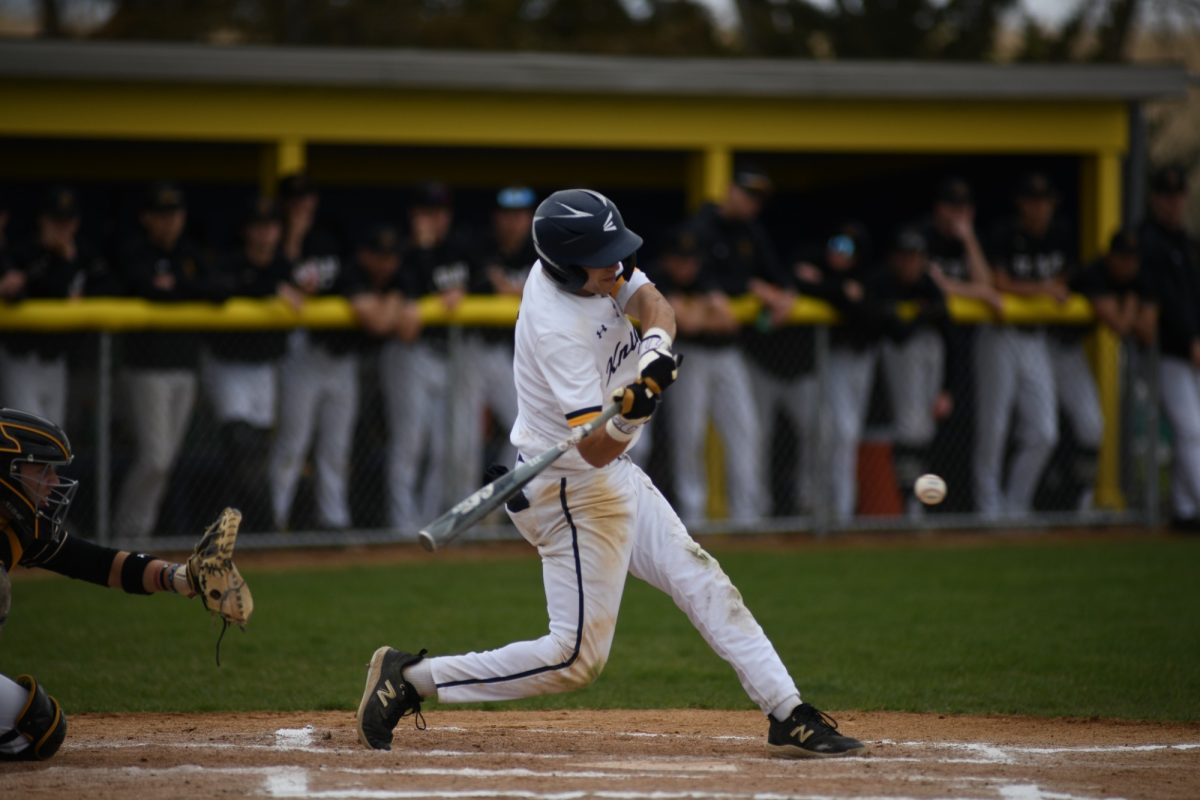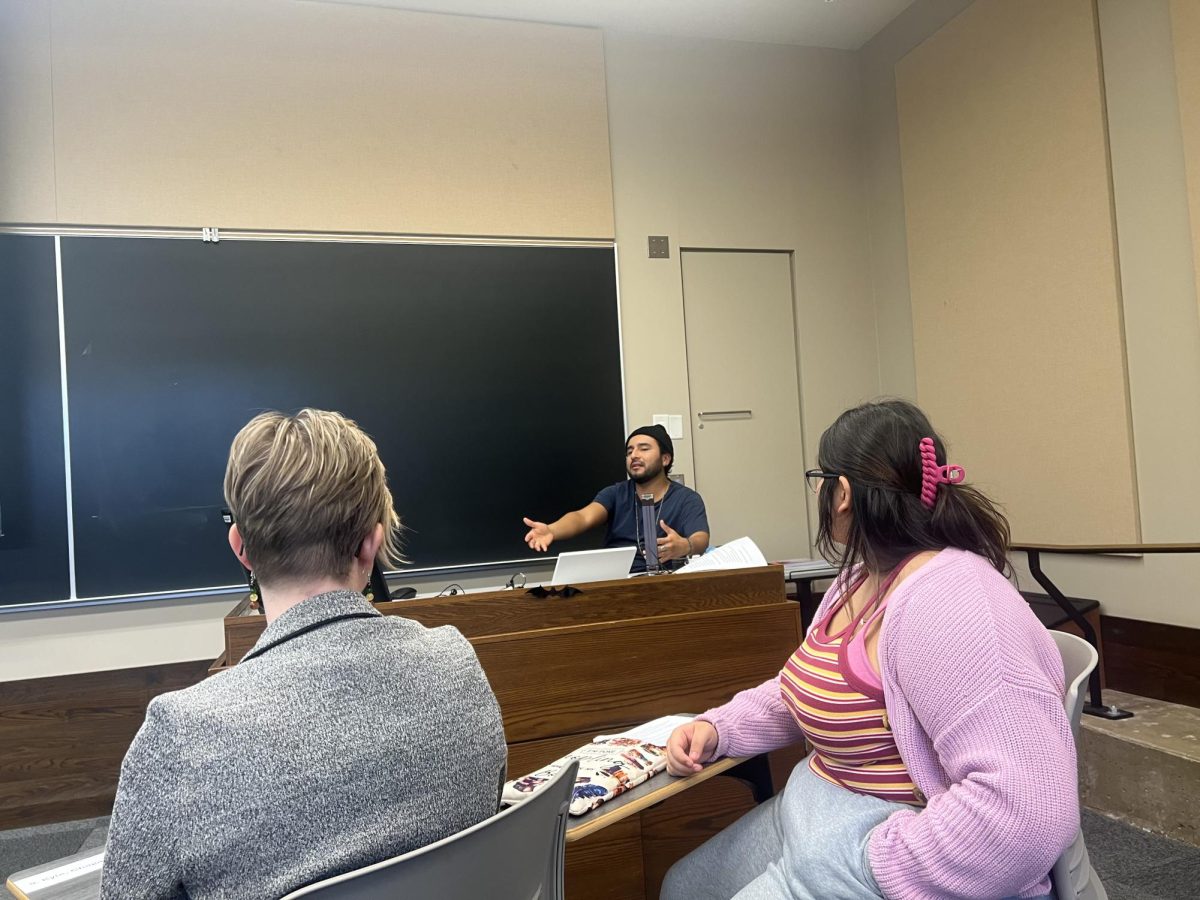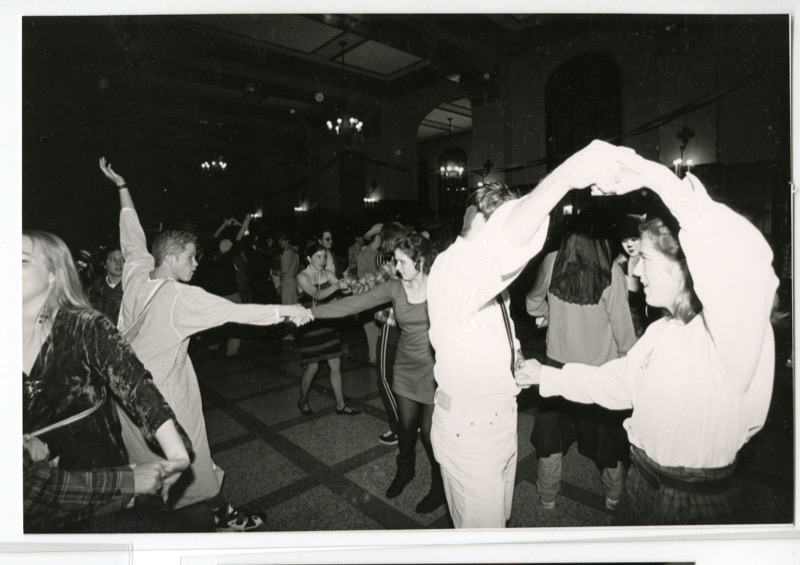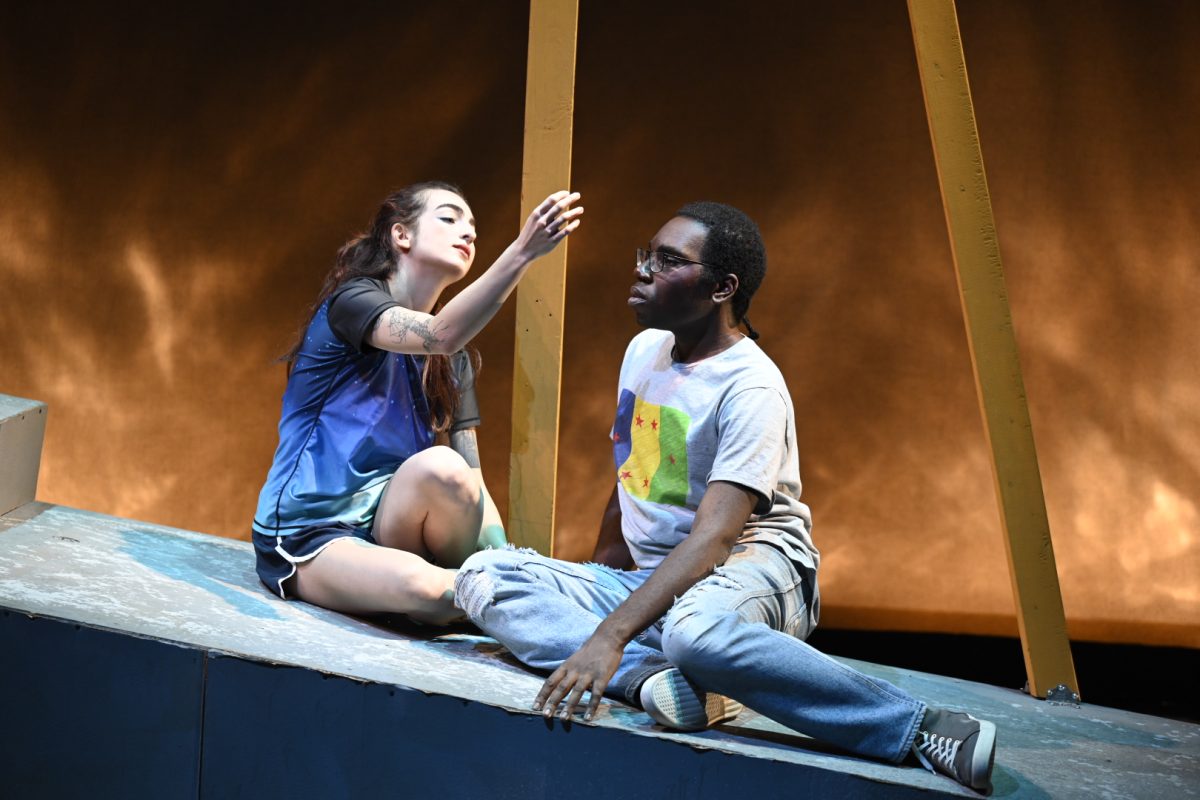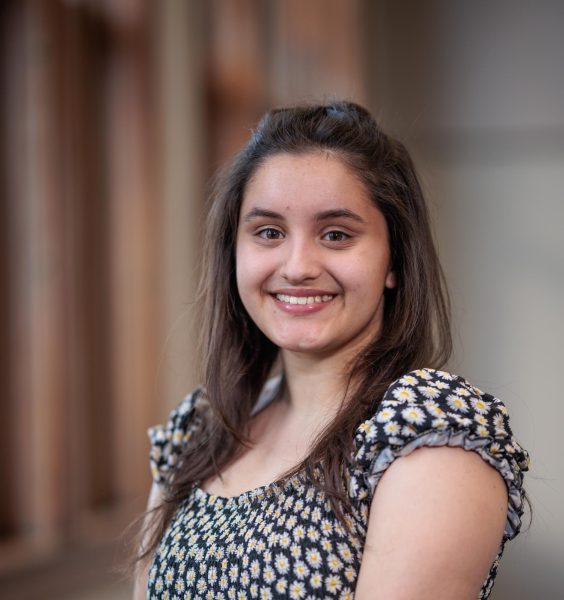On Feb. 22, the Office of Residential Life hosted a Build-a-Buddy Bash in the Great Hall from 12 to 1:30 p.m. At this free event, students were greeted at the entrance with a raffle ticket they could exchange for the body of a stuffed animal and the stuffing needed to bring it to life. These un-stuffed buddies were arranged on a folding table for students to peruse and select their future fluffy friend. There was a wide selection available, including blue axolotls, pandas, white dragons, pastel-rainbow stegosauruses, snowy owls and so many more.
Upon receiving their supplies, students could grab a warm drink from the hot chocolate bar before finding a spot at one of the many folding tables set up in the Great Hall. “People [were] talking and stuffing [their animal],” said Lily Johnson ’27.
Josie Kim, a student from Bates College visiting a friend at Carleton, found the event to be “a nice introduction to Carleton.”
“I had a lot of fun,” said Kim. “I got to make a memory that lasts forever.”
The act of creating one’s own stuffed animal appealed to many people present. Johnson “enjoyed how hands-on it was,” remarking that this event fostered a “friendly atmosphere.” Another participant, Felix Allen ’27, described the atmosphere as “joyous” and “happy,” appreciating the opportunity to “hang out with [his] friends and do a hands-on craft.” Allen also appreciated that any possible financial barrier was eliminated, as this was a free event: “I’m a sucker for free things. At least 85% of the student body agrees with that,” he explained. “Who doesn’t like free things?”
In addition to making stuffed animals, there was a button-making station at the event. As stuffed animal supplies were limited — being handed out on a first-come, first-serve basis — having a button-making station provided an alternative activity for those who arrived after all the stuffed animals had been claimed. At this station, students used a variety of stickers to decorate small paper circles. These circles were then sandwiched between metal and plastic disks in a button-making machine to turn the paper into a wearable work of art.
Melanie Kamenick, Area Director for Cassat, James and Nourse Halls, described the event as “lots of little pieces that all came together for one thing.” Not only were there stuffed animals, hot chocolate and buttons, Residential Life was also able to advertise the current Resident Assistant (RA) openings.
Managing the RA advertising station were Liam Heywood ’25 and Carlos Flores ’24, both current RAs. Flores found the event to be a “great way to facilitate conversations about the job.” Typically, there are not many structured avenues for students to learn about the RA position. There’s the possibility of hearing from friends working as RAs, but “other than what people hear and direct recommendations from friends, you don’t get to talk with strangers about the job,” said Flores. “This [event] would’ve been helpful for me before I got the job,” said Heywood, going on to explain that he had lacked a lot of exposure to the RA position before taking the job.
Flores and Heywood shared the worry that the lack of visibility of the RA position could have negative impacts on who ended up being hired as RAs. “It’s better when it’s not just left up to luck,” said Heywood. “These types of events that actively recruit and engage with the student body are very beneficial.”
Sharing their positive experiences of working as an RA, Flores and Heywood were both quick to encourage others to apply. “The RA job is very rewarding,” said Flores. “When you host an event and see a good turnout with people enjoying themselves, you know it’s directly because of your idea and your effort. You get a big boost of happiness.” Heywood also found his work as an RA to be rewarding, as he got to “provide a voice for students” and “help people in a lot of ways they might not know about.”
Kamenick, the person behind this event, hoped this event would serve as “a fun event that takes [students] away from the stress of homework, extracurriculars and work.” Inspired by events she hosted at other schools where she had served as a hall director, Kamenick wanted to find a way to bring students together that wasn’t just through food. “Campus events usually focus on food. This event was an answer to the question: what else can we do?” Kamenick explained. “Stuffed animals offer something for students to take away from the event and maybe hold on to for the rest of their lives.”

